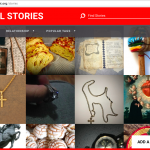Lesson Name: Debating Interpretations: How Objects Are Used in Angela Carter’s “The Bloody Chamber”
Primary Museum Pedagogy: Materiality
Course Title and Description: English 130, Writing about Literature: The Gothic (theme)
This is a course for second semester freshmen that is meant for hopeful literature majors, but which all Queens students have to take in some form. This means that in practice, the class has a diverse range of majors.
Lesson Overview: In this lesson, students will perform a close reading of an individual object (with significance to the story) in groups. They will then have a debate in which one group presents an argument, another group defends their argument with further evidence, and the third group critiques, or finds examples that go against their argument. We use Angela Carter’s feminist fairy tale, “The Bloody Chamber,” which retells an adaptation of Charles Perrault’s “Bluebeard,” the story of a woman’s escape from her serial wife-killing husband. However, you could use any story you want in which objects play a major role as symbols. This story works particularly well because of the rich range of resonances objects often have in the Gothic genre, and also because of the story’s emphasis on class. However, there are many other genres in which objects take on a range of resonances (i.e. horror, realism, Southern Gothic, fantasy) and for an uthemed basic course, this activity could be altered to accommodate whatever text uses objects prominently as symbols.
Read more →


